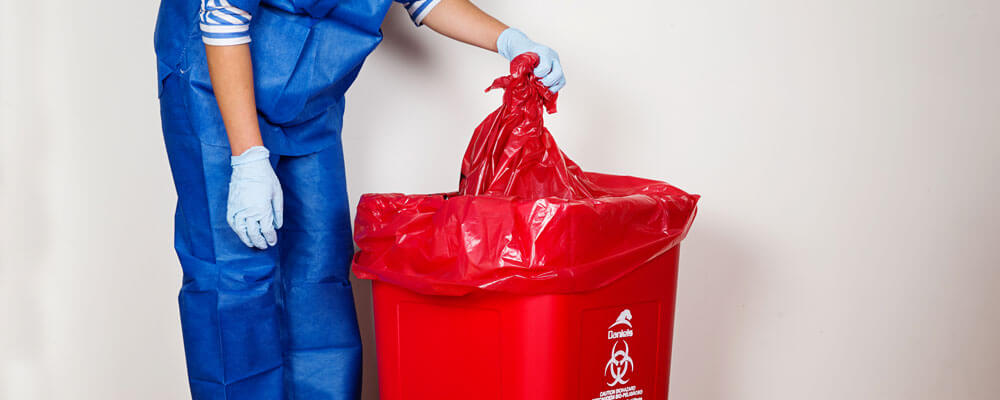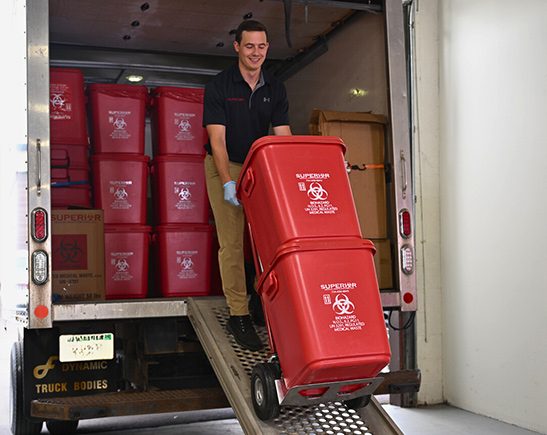Guardians of Cleanliness: Resident Medical Waste Removal Service for Your Assurance
Guardians of Cleanliness: Resident Medical Waste Removal Service for Your Assurance
Blog Article
Stay Ahead of Rules: Expert Suggestions on Medical Garbage Disposal
In a globe where the healthcare sector is constantly evolving, it is essential for clinical centers to remain ahead of laws when it comes to the appropriate disposal of clinical waste. From comprehending the different classifications of medical waste to applying the right collection and partition techniques, this conversation will provide beneficial understandings and workable ideas to help facilities remain ahead of laws in the ever-changing landscape of medical waste disposal.
Comprehending Medical Waste Categories
Recognizing medical waste categories is essential for correct disposal and management in medical care centers. Medical waste describes any type of waste produced by health care tasks that might posture a risk to public wellness or the atmosphere. It is important to categorize medical waste accurately to ensure its risk-free handling, disposal, treatment, and transportation.
There are several classifications of medical waste that health care centers require to be accustomed to. One of the most usual groups include contagious waste, pathological waste, sharps waste, pharmaceutical waste, and chemical waste. Each classification has specific standards and laws for its proper management and disposal.
Infectious waste consists of products polluted with blood or various other bodily fluids, such as handwear covers, dress, and laboratory cultures. Pathological waste refers to human tissues, organs, or body components that call for special delivery and disposal. Sharps waste consists of made use of needles, syringes, and various other sharp objects that can trigger injury and transfer infections. Pharmaceutical waste makes up ended, unused, or infected medications that require mindful handling and disposal. Chemical waste includes solvents, disinfectants, and various other chemical compounds made use of in medical care facilities.
Remaining Up-To-Date With Regulatory Adjustments
Staying present with regulatory changes is crucial for medical care centers to ensure compliance and correct monitoring of clinical garbage disposal. medical waste removal services. With guidelines regularly progressing, it is essential for medical care centers to remain updated to prevent penalties, penalties, and potential harm to the setting and public wellness
To remain ahead of regulatory adjustments, medical care centers ought to develop a system for monitoring and monitoring updates. This can be done by signing up for regulatory newsletters, attending workshops and meetings, and actively taking part in market organizations. In addition, facilities ought to mark a personnel participant or team in charge of staying educated and disseminating details to appropriate stakeholders.
Routine interaction with regulative agencies is additionally essential. Healthcare facilities ought to develop relationships with neighborhood, state, and government firms to ensure they understand any changes in laws that might influence their waste monitoring practices. This can be done via regular conferences, involvement in public comment periods, and positive engagement with regulative firms.
Furthermore, medical care facilities ought to take into consideration partnering with waste monitoring companies that specialize in medical garbage disposal (medical waste disposal services with WasteX). These firms are often skilled in the most up to date guidelines and can supply assistance and support to make sure conformity
Executing Appropriate Collection and Segregation Techniques
To successfully take care of medical waste disposal, health care facilities need to develop appropriate collection and partition techniques based on regulatory guidelines. Executing these techniques makes sure the risk-free handling and disposal of potentially harmful products, safeguards the environment, and lessens the threat of infections and injuries to medical care employees and the public.
Appropriate collection and segregation techniques involve the use of designated containers and classifying systems. Health care centers should supply plainly identified containers for different kinds of medical waste, such as sharps, transmittable waste, pharmaceutical waste, and non-hazardous waste. These containers need to be color-coded and plainly marked to avoid confusion and promote easy recognition.
Furthermore, health care facilities need to educate their team on the right procedures for collecting and setting apart medical waste. This consists of informing them on the different sorts of waste, the proper containers to use, and the importance of adhering to standards and laws. Normal training sessions and refresher training courses should be conducted to ensure that personnel stay up-to-date on finest methods.
Furthermore, medical care facilities must establish a system for normal collection and disposal of medical waste. This may entail partnering with certified waste administration companies that concentrate on medical garbage disposal. These companies will certainly guarantee that the accumulated waste is carried and taken care of in compliance with governing requirements.
Picking the Right Disposal Methods

Incineration is one of one of the most efficient and common approaches for throwing away specific sorts of medical waste, such as pathological waste and sharps. It click to read includes the regulated combustion of waste at high temperatures, lowering it to ash. However, incineration can release hazardous toxins into the air and add to air contamination.

Chemical treatment involves the usage of chemicals to reduce the effects of the waste and sanitize. Microwave treatment utilizes microwave energy to warmth and decontaminate the waste.
Ensuring Compliance Through Documentation and Training
After thoroughly thinking about the suitable disposal methods for medical waste, health care facilities should make sure compliance with policies and lessen ecological effect by carrying out efficient paperwork and training procedures. This try these out step is essential in preserving a sustainable and secure atmosphere for both health care workers and the public.

Training is equally vital in guaranteeing conformity with laws. Healthcare workers who manage medical waste must obtain appropriate training on waste segregation, managing, and disposal treatments. This training should cover topics such as the proper use personal protective equipment, identification of different kinds of waste, and the correct disposal techniques for each and every waste group. By giving comprehensive training, health care facilities can equip their staff to make informed decisions and reduce the danger of incorrect waste disposal.
Final Thought
To conclude, staying in advance of laws in medical waste disposal is important for health care facilities. medical waste removal near me. Recognizing the various classifications of clinical waste, staying updated with governing adjustments, implementing correct collection and partition techniques, choosing the appropriate disposal approaches, and making certain compliance through documents and training are all necessary steps. By following these standards, health care companies can successfully handle and dispose of medical waste in a secure and accountable manner
From recognizing the different classifications of clinical waste to executing the right collection and partition methods, this conversation will give valuable insights and workable suggestions to help facilities remain ahead of guidelines in the ever-changing landscape of medical waste disposal. - medical waste disposal services with WasteX
The most usual groups include infectious waste, pathological waste, sharps waste, pharmaceutical waste, and chemical waste. Health care facilities must give plainly classified containers for various kinds of clinical waste, such as sharps, transmittable waste, pharmaceutical waste, and non-hazardous waste. Medical care centers should establish a comprehensive system to tape-record and track all elements of medical waste disposal, including types of waste produced, quantities, and disposal methods used. Health care employees who manage clinical waste must get proper training on waste partition, dealing with, and disposal procedures.
Report this page